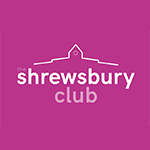
Published: 01 August 2016
Joe Brocklehurst's August Blog
Your Body - A Healing Machine
One of the biggest aspects of my job involves working with the body’s natural healing process to speed up recovery from injury, training, and the stresses of everyday life. With this in mind I thought it would be good to share some information with you to maximise the healing and recovery of your body. This will be useful for you regardless of your activity level as your body is constantly repairing and regenerating.
The human body is a healing machine - your body has the ability to fend off most disease, illnesses, and heal itself.
Billions of cells in our bodies die and get replaced every day, the body is constantly renewing itself. The quality of the new cells depend on the nutrients you consume on a daily basis, if your body has high quality raw material this will create stronger and healthier cells than before.
This is why a balanced diet with plenty of fresh fruit and vegetables, quality protein with healthy fats, and whole grains is so important. Keep yourself well hydrated with pure water, and control your stress levels with a good sleeping pattern, keeping in touch with nature, good friendships, and regular exercise.
Regular exercise can really help control stress levels, which is so important in the modern world. The human body is designed to move, our bodies need a certain amount of movement to help it function the way it was designed to. However you need to remember to allow time for your body to recovery and adapt. Too much exercise can have a negative effect on your sleep, blood pressure, and immune system. So if you’re over doing it you can actually impair your body’s natural healing system.
This is why it’s so important to give your body enough time to recover between training sessions, the ideal recovery time is 48 hours. This doesn’t mean you have to have 48 hours of complete rest, you can still do low intensity exercise, as this has been found to increase muscle relaxation which aids recovery. Things like yoga, pilates, easy running or cycling, and swimming could all be used as recovery from intense training.
If you’re training at a high volume and intensity for a specific event, you can use treatments to speed up recovery. This includes using ice or heat treatment, contrast therapy (combining heat and ice), a foam roller, and sports massage.
One thing to remember – everyone’s different so don’t start comparing your training to your friends, as this can easily lead to overtraining and injury. Make sure you recognise the difference between pain and soreness, and if something’s not feeling right don’t be afraid to take a few extra rest days.
So just remember if you look after your body this will give it the best chance of healing itself. Rest is important to give your body time to recover, regenerate, and adapt, so you gain the full benefits from your training. You can use treatment's to enhance recovery, this will give you the opportunity to train harder, as you will recovery faster between sessions and competitions. Finally listen to your body, if it needs something it will tell you.

Published: 01 August 2016